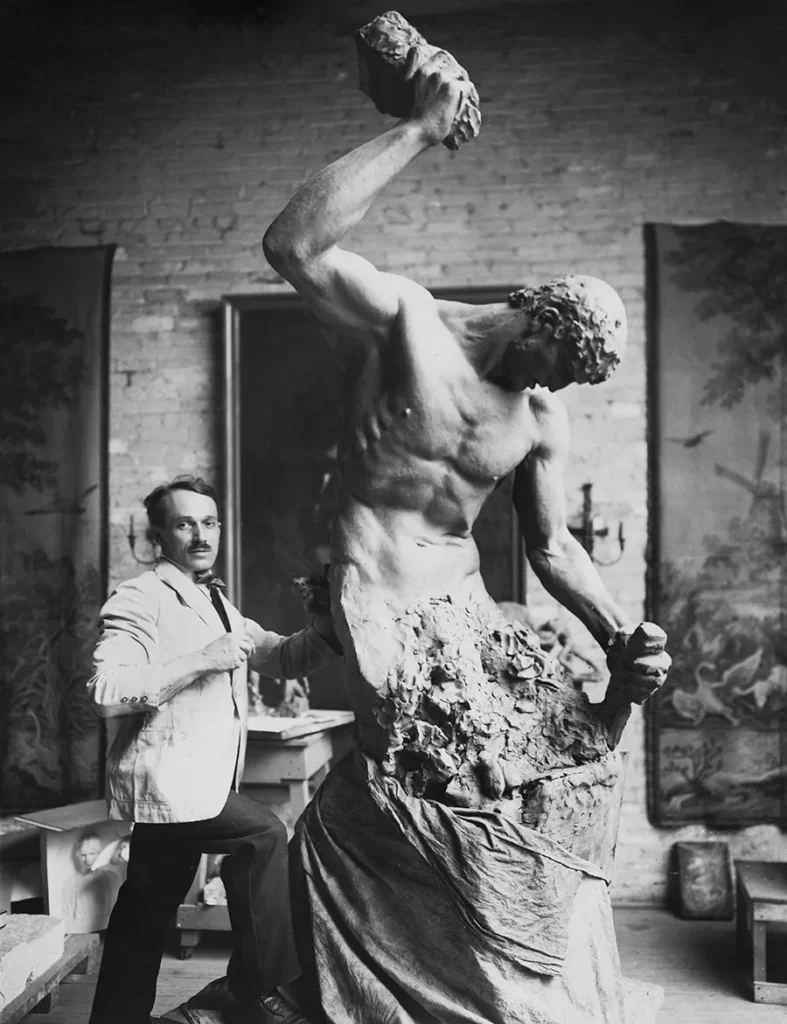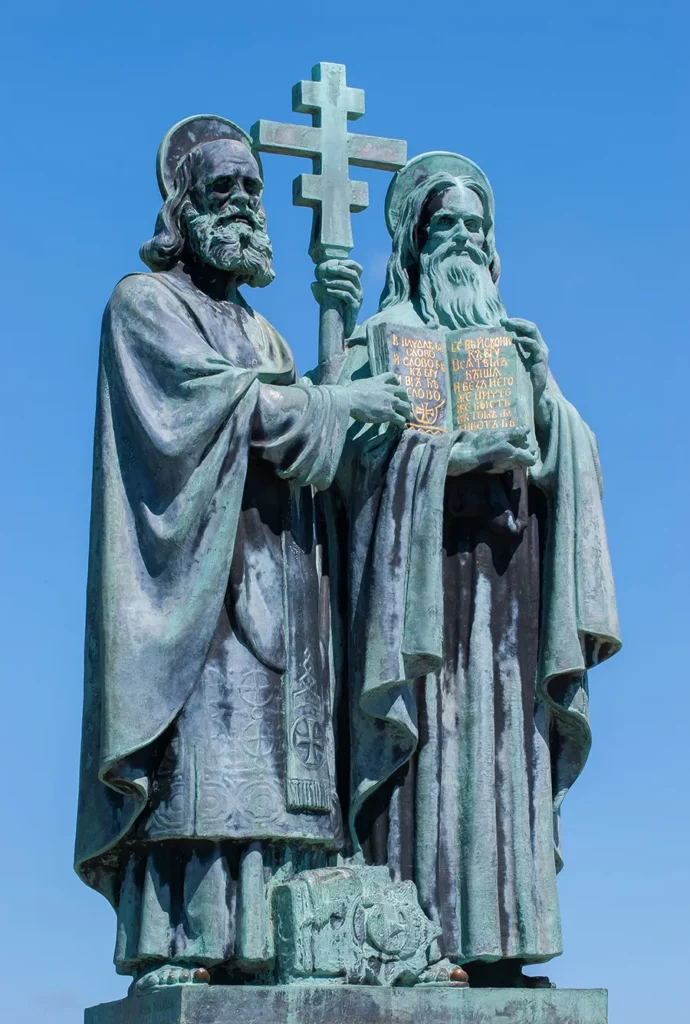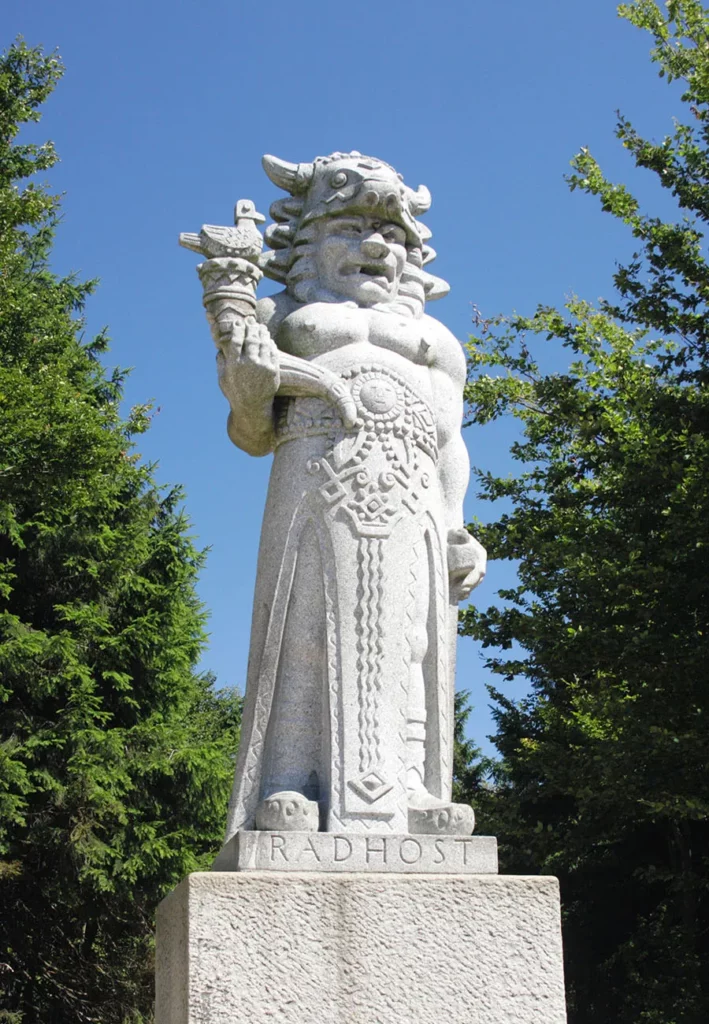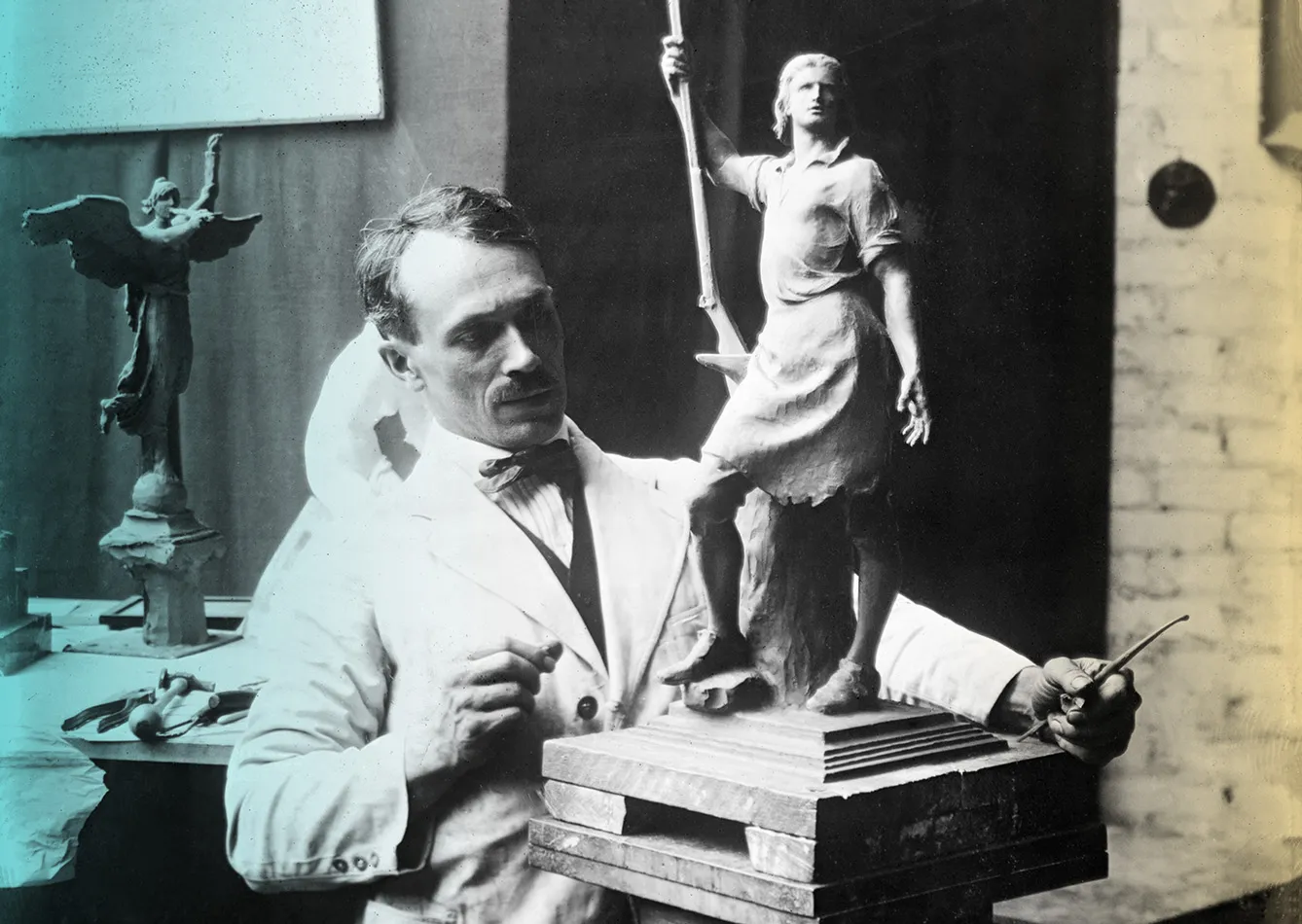The gifted Czech sculptor overcame several difficulties in his life: he was born as the seventh child into a less fortunate family, overcame a physical disability, and went through school where he was only good at a few subjects. Even so, Albín Polášek became America’s most important sculptor, leading major art institutions for many years and breaking a world record in his time.

Humble beginnings
Albín Polášek was born in 1879 in the Moravian town of Frenštát pod Rodhaštěm as the seventh child into the family of a weaver and the daughter of a butcher. As a child, he worked on the family farm and helped in the shop.
Already at a young age, Albín’s artistic abilities were strongly manifested. He carved wooden figures, modeled clay figures, and drew very well. In his youth, he also carved Christmas cribs, which have a great tradition in the Frenštát region in his memory. However, he was not one of the most diligent pupils at school, except for drawing, singing, drawing and gymnastics. When he was older, he attended a weaving school in his hometown, Frenštát.
Thanks to his carving talent, Albín got into the prestigious carving school in Vienna. There, he became a master carver under the guidance of Jan Mayer. After returning to Bohemia, Albín found no work for him in his homeland. Together with his brother Robert, he decided to take a big step. At 22, he says goodbye to his parents and leaves for the United States. In 1901, the most crucial episode of his life begins.
The American episode of Polášek’s life
Albín breaks up with his brother Robert in the USA and heads to the Midwest. He began working as a carver in a factory, producing altars and sacred objects, first in a factory in Dubuque, Iowa, then in La Crosse, Wisconsin.
At 25, he received a letter of acceptance to the prestigious Pennsylvania Academy of Fine Arts in Philadelphia, majoring in sculpture under Charles Grafly. As a student in 1907, he created the sculpture Man Carving His Own Destiny, one of his most important works. Then, in 1909, came his second masterpiece, the Eternal Moment.
In 1909, he also became an American citizen, and his name began to resonate with the American professional community. Albín Polášek closed the first decade of the new century with a huge success. He received a prestigious scholarship to study sculpture at the Academy of Arts in Rome in 1910.


The road to America’s top
He spent the next six years back in Europe. While at the Old Continent, he created more sculptural masterpieces and collected one award after another. In late 1910, he won the Rome Prize or the Prix de Rome. Then, in 1913, he received an honorable mention at the Paris Salon for his sculpture The Sower. Then, in 1915, he received the Widener Gold Medal from the Pennsylvania Academy of the Fine Arts for his sculpture Aspiration.
In 1916, at 37, he was invited to head the sculpture department at the prestigious Art Institute of Chicago, where he taught his students for nearly thirty years. He continued to create in Chicago and never ceased to amaze.
There, he created the world’s largest equestrian sculpture of the time. For the large Czech community in Nebraska, he made the Victorious Christ statue for St. Cecelia’s Cathedral in Omaha, Nebraska. But he also worked on political statues. For example, he created a statue of American President Woodrow Wilson for Prague. Unfortunately, the statue was destroyed during the Nazi occupation of Prague. Interestingly, the Nazis did not destroy the statue until 1941, when Germany officially declared war on the United States. However, Prague had been occupied by the Germans since 1939. The reconstructed Wilson statue has stood near its original location since 2011.
Home is home forever
Even though Albín Polášek became an important American sculptor, he never forgot his native Bohemia. He often returned to Czechoslovakia before the war. In 1929, he created the legendary statue of the pagan god Radegast, which stands on top of Radhoštť mountain. Polášek became an associate member of the American National Academy of Design in 1927. In 1933, he became a full member. By that time, he was already a legend. He devoted himself to art as a professor and independent artist.
He never forgot Czechoslovakia, even though he was not allowed to return after the communist coup in 1948. The last time he saw it with his own eyes was in 1947. In 1950, he suffered a stroke that left him paralyzed in one arm. His handicap was doubled. Albín had been lame in one leg since he was young. Neither of these handicaps could ever limit his work.
The end under the warm Sun
Albín spent the rest of his life in Winter Park, Florida, where he moved from Chicago. Under the Florida sun, he continued to create works of art for the rest of his life. It was also in Florida where he married his longtime assistant and love of his life, who died of cancer a very short time later.
The end of his genius came in 1965 when he was 86 years old. He left behind a beautiful house, which his admirers, students, and relatives turned into a museum dedicated to him. Albín was outlived by his second wife, who became a prominent overseer of his legacy.
The fate of Albín Polášek is a combination of the American dream and Czech hard work. A boy with immense talent born in poor circumstances became a top American sculptor who still inspires art students today.







